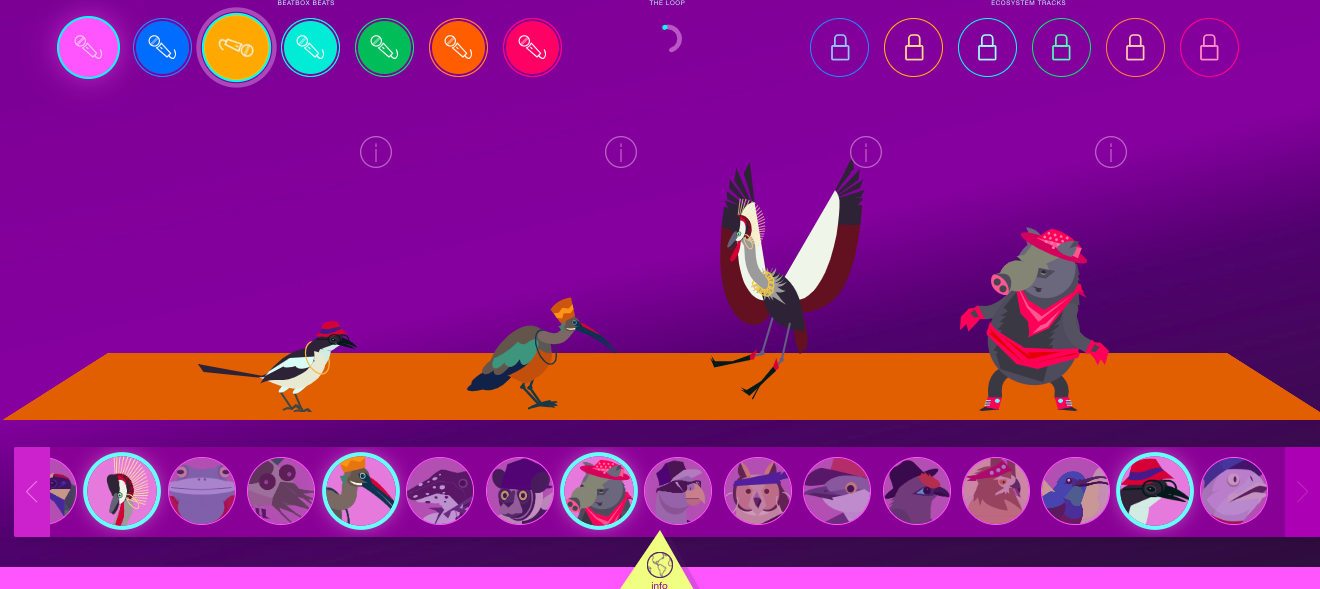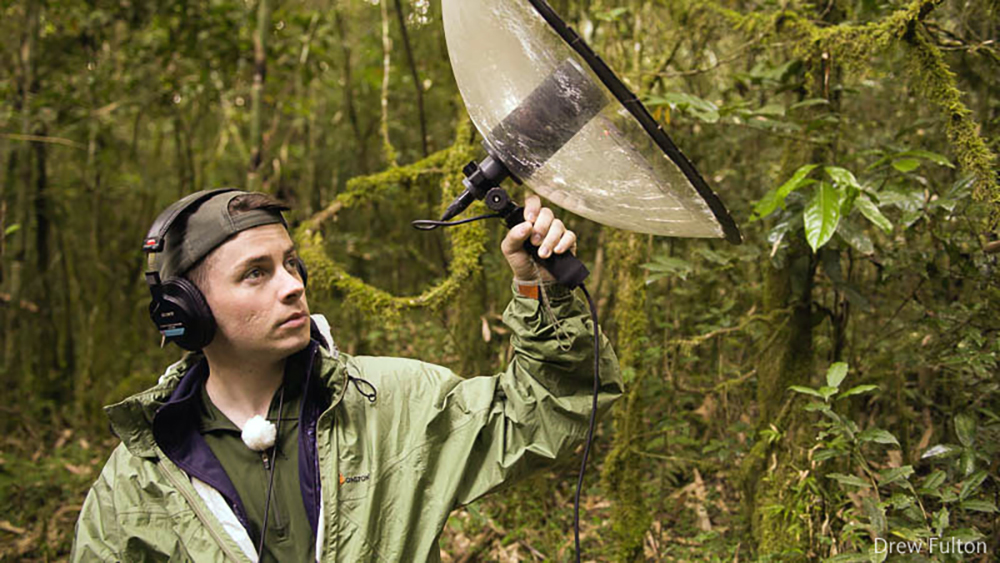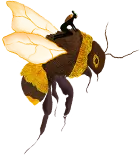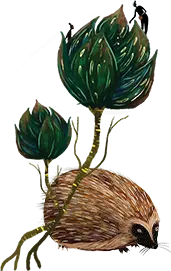
A showcase of five spectacular sounding birds

We had the pleasure of interviewing sound recorder, researcher and musician Ben Mirin in Hyde Park while he was visiting the UK. We had a great chat (which you can check out here), but one of my favourite moments was being interrupted by three young kestrels as they swooped and screamed “klee, klee, klee!” overhead.
We soon got chatting about some of Ben’s favourite bird sounds which motivated me to do a bit of my own research, trying to find the most remarkable sounding birds on the planet. It’s a tough task, given there are around 11 000 known bird species and most emit some sort of song, call, screech or warble, but here are a few of my personal favourites, including a number inspired by Ben’s own work and research.
By David Urry

1) The Drongo
There are several different species in the Drongo family, largely restricted to the Old Word tropics, and they share several characteristics, including an impressive vocal repertoire. Some are fantastic mimics also, such as the Fork Tailed Drongo (Dicrurus adsimilis) of the Kalahari.
As the BBC Earth video shows below, the Kalahari Drongo uses several alarm calls to communicate danger nearby. Many other species, like the meerkats in the film, have learned to interpret and respond to these calls, using the drongo as another sentry. However, the drongo is often the one using them!
Cheeky trickster
As well as communicating honest alarm signals, occasionally the drongo will emit an alarm call when there is in fact no danger around. In the chaos that ensues, with animals scurrying for cover, it then swoops down to steal any juicy insect food left behind. Nearly a quarter of its food is acquired in this sneaky way in fact. What’s even more remarkable than this ‘sleight-of-sound’, is the fact that some drongos even learn to mimic the alarm calls of other species, creating even more confusion to capitalise on.
They certainly earn their title as the “Kalahari’s greatest trickster”, though they aren’t necessarily the greatest mimics of the bird world. The lyre bird takes that crown – check it out here if you don’t believe me.
Remixing Madagascar
There are many other drongo species of course, with equally fascinating songs and calls. While out in Madagascar for his Remixing Madagascar project, Ben managed to capture this wonderful recording of the endemic Madagascar Drongo.
Watch the excellent video below to learn more about the Remixing Madagascar expedition, where Ben recorded the sounds of many of the island’s species, using them to make music in collaboration with the local population.
2) The White-rumped Shama
If you search online for footage of this pretty songbird (native to the Indian continent and South east Asia), you will mostly find videos of it singing in a cage. This is because the white-rumped shama (Copsychus malabaricus) is one of the most sought after birds for hugely popular bird singing competitions. These competitions are popular throughout South East Asia, but particularly in Indonesia, where whole football stadiums can be filled with people turning up to watch and compete.
These bird singing competitions, and the complex relationship between participants, supporters and songbirds, was the subject of Ben’s PHD research, which he discusses in the video below.
Whistles and flutes
It’s not hard to understand why the white-rumped shama is so highly regarded for its singing, which includes a highly varied combination of lilting whistles and flute-like notes, rarely repeating, and often imitating other birds calls. It reminds me a little of our very own Eurasian blackbird, just a little more elaborate and with a tad more gusto!
The video below is a common example of how these birds are kept in cages. I would rather share a video of the bird in the wild, but sadly these are harder to find, nor do they show off the bird’s exquisite singing as well. So this is by no means an endorsement of the caged bird trade, which is undoubtedly putting pressure on the species, just a chance to hear this wonderful bird sing. And as Ben discusses in his interview, these things are rarely black and white, which is why understanding the nuance, through the study of ethno-ornithology (the relationship between humans and birds) is so vital.
3) The Tropical Boubou
Next up on our list is the Tropical Boubou bird (Laniarius aethiopicus), sometimes referred to as the Bell shrike. It can be found in areas with dense ground vegetation, like forest edges, where it tends to feed on the ground, hunting a range of invertebrates and even small vertebrates (like lizards or snakes). Like other shrikes, it skewers its prey on thorns or squishes them in cracks and crevices to save for later!

A lonely duet
Perhaps its most striking feature though, is its voice, as it’s a bird more often heard than seen. It has a diverse repertoire, but frequent calls of “bou, hou” or “boubou” give the bird its name. It also uses a range of other sounds, from low and bubbling whistles to high pitched “rattles”, which it uses to communicate different messages.
It is a bird that also likes to sing in pairs, with males and females sometimes performing more than a dozen specific duets. What’s more remarkable is that a solo male will sometimes perform a ‘duet’ alone, performing both parts. It copes remarkably well, in part thanks to its specialised voice box (a syrinx rather than larynx), allowing it to sing in two voices at the same time!
Beastbox
The vocal skills of this majestic songster was one of the reasons it was selected by Ben to feature in the wonderful Beastbox, a collaboration with the Cornell Lab of Ornithology. It’s basically an interactive online music making experience, combining Ben’s love of beatboxing and animal voices. You are able to choose from a number of beatboxing backing tracks, representing various ecosystems, than select different combinations of animals to ‘sing’ and perform over the top – mixing it up and swapping species in and out to your heart’s content.
It is an incredibly novel way of engaging people with the sounds and species of the natural world and is a LOT of fun. I spent probably longer than i should have playing around with it (for the sake of research of course.)
Watch the video below to hear more about how Ben combines his passion for both music and Nature.

4) The Curlew
I really wanted to pick a UK species for this list, as we sometimes assume that the most spectacular or interesting species must be far away in tropical climes. The reality however, is that we have some truly magical sounding birds closer to home.
The Curlew isn’t the most showy or spectacular of singers, but it’s unique vocalisations feature complex harmonics and pitch variations and the ‘bubbling’ sound made by the male curlew to attract a mate and defend his territory is one of the most evocative sounds of the British countryside.
Haunting music
The call of the curlew is interwoven through various folktales and has held a lot of meaning throughout the UK for many years, including as a harbinger of spring. It’s also inspired many poets, musicians and writers with its haunting ‘piping’ call and was often seen bad omen, with otherworldly associations.
More recently, it is the plight of the Curlew itself which has inspired a group of musicians to create the Curlew Sounds Project. The Eurasian curlew is threatened with extinction in the UK and Ireland, so a group of leading musicians – including David Gray, Talvin Singh, and The Unthanks – have recorded a stunning new album to raise money and awareness. You can listen to and purchase the album here.
Another of our ReWild Yourself Champions, Sam Lee, also included the Curlew’s voice in a song – McCrimmon- on his latest album, Songdreaming, which you can listen to below, or check out our full album review here.
5) The Club-winged Manakin
Our final choice is a bit of left-field one.
You are less likely to encounter the Club-winged Manakin than some of our other choices, unless you are wandering the cloud forests of Colombia or Ecuador, but if you do, you are in for a treat. It emits a three syllable metallic “bic-bic-burrrr” call that cuts through the dense canopy. What makes it most astonishing though, is that the sound is made by its wings, rather than its mouth!
This pocket-sized passerine (perching bird) rubs its club-shaped secondary wing feathers together 107 times per second, to make this distinct, almost electronic sounding noise. It puts on quite the performance doing it – which you can watch below – the combination of which is designed to prove irresistible to potential mates.
Connecting to Nature through sound
Although the five birds we showcased here might seem particularly special or remarkable. The truth is there is joy to be hand in celebrating all bird sounds, and other sounds found in Nature. Once you notice and tune in, a whole rich sonic landscape can open up, and you needn’t travel far to find it. After all, as Ben reminds us in his interview,
Every moment in time is a unique sound; every sound is a once in a lifetime opportunity
In fact, using sound and our other senses is a wonderful way to connect with Nature and improve our wellbeing, something you can read about in our fantastic article as part of our It’s Time to ReWild Yourself Campaign.
As an extension, making your own wildlife recordings is an activity you may also want to try. If so, check out our set of tips that Ben kindly provided us with. Feel free to submit your own recordings to us as well.


Find out more….

Join Our Community...
Sign up for stories, tips and inspiration from around the globe.









